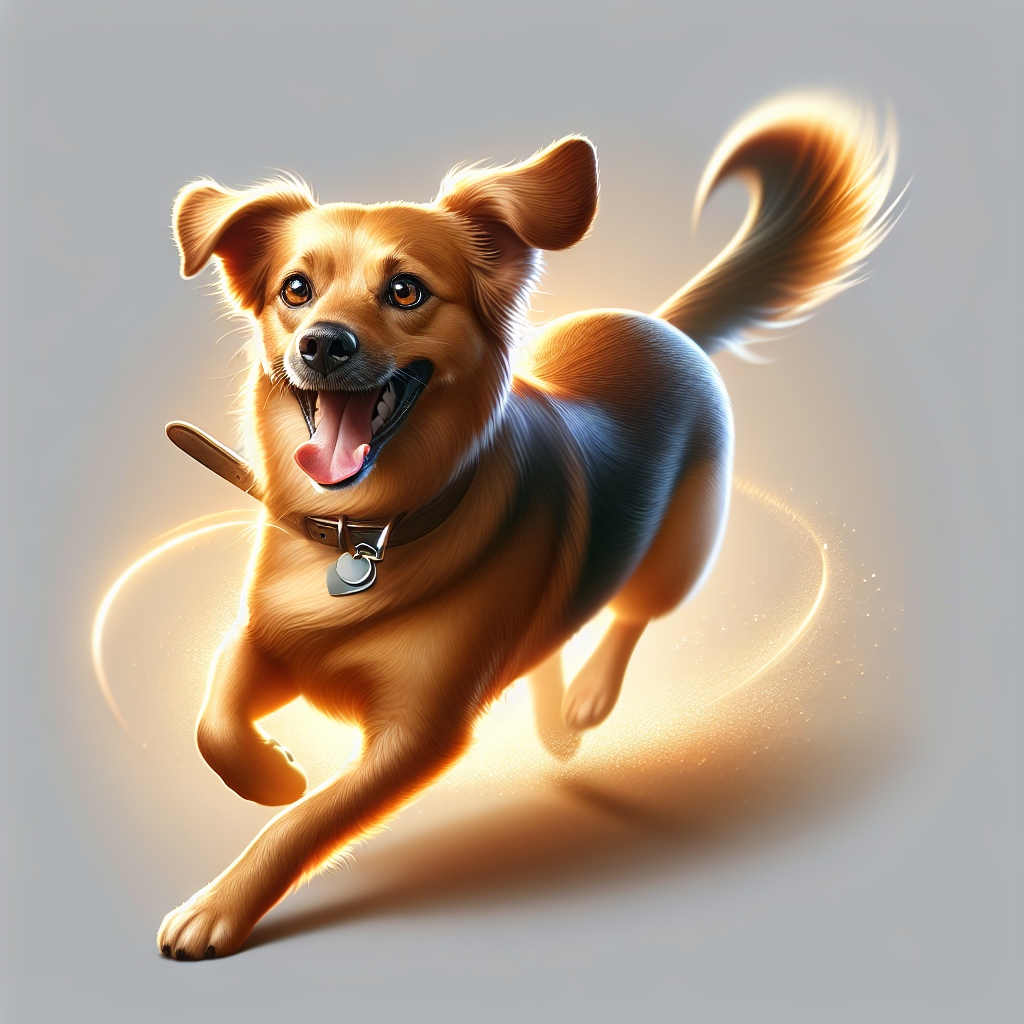Diving into the Flea Circus: Understanding Flea Infestations

Fleas. The little jumpers. Tiny circus performers that don’t need a net. If you’ve ever had a pet, you’ve probably dealt with them. They’re like that one relative who overstays their welcome—except these guys bite. Hard. Flea infestation problems can start small. One minute, your pet is happily scratching away, and the next, your house feels like a flea motel. Free breakfast included. These pests multiply faster than you can say “flea infestation,” and before you know it, they’re everywhere.
It’s not just about the itching, though. Fleas bring a truckload of issues. They’re like tiny vampires, feeding off your pets and leaving them with more than just an itch. Anemia in severe cases. And let’s not forget the tapeworms—a free gift with every infestation. Lovely, right? Fleas are resilient, too. They can survive without a host for a long time, hiding in carpets, bedding, or that comfy couch you just bought. So, what’s a pet owner to do? Panic? Nah. Let’s move on to the hero of our story—Dawn dish liquid.
Dawn to the Rescue: How Dish Soap Takes on Fleas
Enter Dawn dish soap. Yes, the one sitting by your sink. You might be wondering, “Will Dawn dish liquid kill fleas?” You’re not alone. Many pet owners have turned to the dawn dish soap flea remedy as a go-to solution. It’s a humble bottle that promises to do more than just tackle greasy pots and pans.
You see, when it comes to using soap for flea control, Dawn is like a ninja. It sneaks up on fleas, suffocating them without a sound. It’s not magic—it’s science. The soap breaks down the flea’s exoskeleton. They can’t float in the water, and they can’t breathe. In other words, their days of freeloading are over.
But don’t get too excited yet. Dawn is no miracle worker. You can’t just pour it everywhere and hope for the best. There’s a method to this madness—a flea bath for pets, if you will. And it takes a bit of patience and a dash of elbow grease. Let’s dive into how dish soap kills fleas.
The Science Behind the Soap: Why it Works
Alright, let’s talk science. But don’t worry—I left my lab coat at home. The question is, “How does dish soap kill fleas?” The secret’s in the soap’s ability to break down oils and fats. Fleas, those jumpy little nuisances, have a waxy coating. It’s like their personal raincoat, keeping them safe and dry. Dawn dish soap strips this coating away, leaving the flea vulnerable.
Without their protective layer, fleas drown. It’s as simple as that. They’re not swimmers, after all. This is why the dawn dish soap flea remedy has gained a bit of a cult following. It’s easy, cheap, and you probably already have it at home. But remember, Dawn’s not a magic potion. It’s part of a broader strategy—a tool in your flea-fighting arsenal.
While Dawn can tackle the fleas on your pet, it won’t take care of those lurking in your home. Flea eggs and larvae are another story. So, while you’re giving your pet the ol’ flea bath, you’ll need a plan for the rest of the house. Vacuuming, washing bedding, and maybe even calling in the pros if things get out of hand.
Bath Time Blues: Step-by-Step Guide to Using Dawn
So you’ve decided to give it a shot—the flea bath for pets with Dawn dish soap. Here’s how to do it without turning your bathroom into a slip-and-slide. First, gather your supplies: Dawn dish soap, a cup, a towel, and a flea comb. If your pet’s not fond of bath time, maybe a treat or two. Or three.
Start by filling the tub with warm water—enough to submerge your pet but not drown them. Safety first, folks. Wet your pet thoroughly, then apply a small amount of Dawn. A little goes a long way here. Massage it into their fur, lathering it up like you’re giving them a spa day they didn’t ask for. Let it sit for a few minutes. This is where the magic happens.
Rinse thoroughly. And I mean thoroughly. You don’t want any soap residue left behind. It can dry out your pet’s skin. Use the flea comb to remove any dead fleas. It’s satisfying in a weird way—like popping bubble wrap. Finally, dry your pet with a towel. Give them a treat. Tell them they’re a good boy or girl. They’ll appreciate it.
Using Dawn is simple, but it doesn’t replace other flea prevention methods. It’s a quick fix. A band-aid, if you will. For long-term control, you’ll need more. Flea collars, oral medications, maybe even a monthly treatment. It’s all about keeping those fleas at bay—because once they’re gone, you want them to stay gone.
The Fine Print: When Not to Use Dawn
Now, before you go bathing every pet in sight, let’s talk about the dawn dish soap limitations. Dawn’s great, but it’s not for everyone. Cats, for example, might not appreciate it. Their skin is sensitive. They have their own way of dealing with fleas, and it usually involves a bit of professional help. Dawn can also dry out your pet’s skin if used too often.
And remember, Dawn’s not a substitute for regular flea treatments. It’s a temporary fix. A way to get a handle on things when you’re in a pinch. But for long-term flea control, you’ll want to talk to your vet. They’ll have the best advice for keeping your furry friend flea-free.
So, will Dawn dish liquid kill fleas? Yes, but with a few caveats. It’s a handy tool, but not the whole toolbox. Use it wisely, and you’ll save yourself a lot of trouble. Thanks for sticking it out with me. Here’s to keeping our homes flea-free, one bath at a time.
Can Dawn Dish Liquid Be Used on Pets?
Alright folks, let’s dive into this sudsy topic. You’ve probably heard about using Dawn dish soap on pets, right? I mean, it’s the stuff we use to scrub our greasy pans. So, can it really help with the flea circus going on in your pet’s fur? Well, here’s the lowdown.
Dawn dish liquid—our trusty kitchen companion—has been whispered about as a flea buster. The idea is simple. Fleas have this waxy coating, and Dawn can cut through it and drown the little pests. But before you grab that blue bottle, here’s the kicker: it’s not all sunshine and rainbows. Dawn’s not exactly made for pets. It’s strong, and this can mean trouble for your pet’s skin. Use it cautiously, my friends.
Now, you might be wondering, “Is using Dawn dish soap on pets a good idea or just a desperate act?” Well, it’s a bit of both. It’s not meant for regular use. But if your furry buddy is crawling with fleas and you’re in a pinch, it could be a temporary fix. Just remember, it’s like borrowing your neighbor’s lawn mower—good for the short term, but you wouldn’t want to rely on it forever.
Steps to Using Dawn Dish Liquid for Fleas
So, you’re ready to give it a whirl. Here’s how to wash your pet with Dawn dish soap without turning bath time into a disaster movie.
First, wet your pet’s coat thoroughly. I mean, really soak it. Now, squeeze a small amount of Dawn into your hand. Don’t go wild—just a dab will do. Start lathering it up, but focus on the areas where fleas like to party—neck, back, and tail. Keep it out of your pet’s eyes and ears, though.
After the lathering comes the rinse. And rinse again. And again. You’ll want zero soap left behind. Trust me, your pet will thank you. Finally, dry with a towel and keep them warm. The flea bath might have left them feeling a bit chilly.
These Dawn soap flea treatment steps are straightforward, but don’t let that fool you. Your pet might give you the stink eye for a while—cats, in particular, have a knack for holding grudges.
Potential Risks and Concerns
Now let’s talk about the elephant in the room. Using Dawn dish soap on pets isn’t all tickety-boo. There are risks involved—dawn dish soap flea treatment risks, if you will.
For starters, it can dry out your pet’s skin. Imagine washing your hair with dish soap every day. Yikes, right? Pets have sensitive skin, and using Dawn frequently can cause itchiness, dryness, or even irritation. It’s like asking your pet to wear a wool sweater in July. Not cool.
Then there’s the fact that Dawn doesn’t kill flea eggs. You might see those fleas going belly up, but their offspring are lurking around, ready to hatch. It’s like a horror movie sequel you didn’t ask for.
So if you’re thinking of making Dawn your go-to, think again. It’s best used as a one-off, emergency measure, not a regular part of your pet care kit.
Alternatives to Dawn Dish Liquid for Fleas
Alright, if Dawn’s not the holy grail of flea treatments, what are the alternatives? Don’t worry, there are natural flea remedies for pets that won’t make you or your pet lose sleep.
First up, there’s diatomaceous earth. Sounds fancy, but it’s just a powder made from fossilized algae. Sprinkle it on your pet’s coat, and it dehydrates those pesky fleas. Just make sure it’s food-grade.
Then there’s apple cider vinegar. Mix it with water in a spray bottle and give your pet a light misting. Fleas hate the stuff—it’s like garlic to vampires.
You might also consider essential oils like lavender or cedarwood. They’re natural flea repellents, but always dilute them and check with your vet first. Some oils can be harmful to pets if used incorrectly.
And let’s not forget the flea bath alternatives. There are shampoos made specifically for pets. They might cost a few bucks more than Dawn, but they’re gentler on your pet’s skin and more effective in the long run.
Real-Life Stories: Pet Owners’ Experiences
Now, let’s hear from the real experts—the pet owners. Pet owner experiences with Dawn soap are as varied as the pets themselves.
Take my neighbor, Jim. He swears by Dawn. Says it’s the only thing that keeps his dog, Max, from scratching himself bald. But then there’s Lucy from down the street. She tried it once and ended up with a very grumpy cat and a vet bill for a skin treatment.
And me? I’ve had my share of flea battles. One summer, my dog, Buddy, was scratching like he had a dance-off with a colony of fleas. I used Dawn in a moment of desperation. It worked, sort of. The fleas were gone, but Buddy wasn’t too happy with me for a while. But hey, you live and learn, right?
So there you have it. Fleas are a pain, but there’s more than one way to deal with them. Whether you stick with Dawn, try something new, or mix it up, remember—you’re not alone in this. We’ve all been there, battling the tiny invaders. Keep at it, and good luck. Thanks for sticking with me through this flea saga. Hang in there—your pet’s coat will be flea-free before you know it.
Real-life Experiences: Readers Share Their Flea Battles
Picture this: you’re sitting at home, sipping your coffee, and suddenly you notice it—your furry friend is scratching like there’s no tomorrow. A dreaded flea invasion. You’re not alone. Many have faced this battle, armed with nothing but a bottle of Dawn dish liquid and a prayer. Real people, real pets, real fleas—this isn’t some made-up drama. It’s life.
Take Sarah, for instance, from sunny California. She shared her flea treatment story with us. One summer, her golden retriever, Max, was scratching like he was auditioning for a dance show. Sarah, in a moment of desperation, reached for the Dawn she had by her sink and gave Max a bath. “It was like a miracle,” she said. “Those fleas didn’t stand a chance.” Max was flea-free, and Sarah became a believer in the power of dish soap on fleas.
Then there’s Tom, a DIY enthusiast from Texas. He tried Dawn after reading about it online. “I didn’t think it would work,” he admitted, “but I was wrong.” His personal flea battle experience was a success story to tell at barbecues. Fleas gone, dog happy, Tom happy.
Now, not every story has a fairy-tale ending. Maria from New York City shared a cautionary tale. Her cat, Whiskers, didn’t take kindly to the soap. “She was not amused,” Maria laughed, “and neither was I when I saw the mess.” But hey, that’s how the cookie crumbles sometimes. You live, you learn, and you try not to get soap in your eyes.
Alternatives to Dawn: What Else Can You Try?
Let’s say you’re not convinced. Maybe Dawn dish liquid isn’t your cup of tea. There’s a whole world of DIY flea treatments out there waiting to be discovered. It’s a competitive field, this flea-fighting business.
Some folks swear by vinegar. Yes, the stuff you put on your fries. They say a vinegar and water solution can do wonders. Others opt for essential oils—lavender, peppermint, you name it. They’re like little soldiers in the war against fleas, marching to the beat of their own drum.
And then there’s the all-natural route. Baking soda and salt, sprinkled like a fine dust over your carpets. It’s not as glamorous as it sounds, but some folks swear by it. Fleas hate it, apparently.
Of course, you’ve got your commercial options, too. Flea shampoos, sprays, collars—it’s a flea market out there. But here’s the kicker: even with all these choices, many still return to the humble bottle of Dawn. It’s like an old friend you can always count on in a pinch.
The Science Behind It: Why Dawn Works (Or Doesn’t)
Now, let’s get into the nitty-gritty—why might Dawn work on fleas? It’s not magic, though sometimes it feels that way. The science of dish soap on fleas is simple. Dawn breaks down the fleas’ exoskeleton, making them easy to wash away. It’s like a one-two punch that leaves fleas down for the count.
But here’s the rub—not everyone is sold on it. Some experts argue that while Dawn can kill adult fleas, it doesn’t tackle the eggs or larvae. So, you might be winning the battle but not the war. It’s a temporary fix, not a long-term solution.
Still, for many, it’s a handy trick to have up their sleeve. It’s cheap, it’s cheerful, and it’s sitting right there on your kitchen counter. Just remember, it’s not a cure-all. Fleas are stubborn little critters, and sometimes you need more than just soap and water to send them packing.
Precautions and Warnings: What You Need to Know
Before you go all-in with Dawn, there are some things you should know. Safety first, folks. Flea treatment safety tips are essential, and not just for your pets, but for you, too.
First off, is Dawn safe for pets? Generally speaking, it’s considered safe for dogs, but cats can be another story. They’re sensitive creatures, and some might not react well to the soap. Always check with a vet if you’re unsure. Better safe than sorry, right?
And let’s not forget about you—you don’t want to end up with soap in your eyes or a slippery bathroom floor. It’s all fun and games until someone slips on a sudsy tile.
There’s also the risk of overdoing it. Too much soap can dry out your pet’s skin, leaving them itchy and uncomfortable. It’s a balancing act, like walking a tightrope with a soapy sponge.
Final Thoughts: Is Dawn the Right Choice for You?
So, here we are at the crossroads. Is Dawn dish liquid your knight in shining armor or just another soap in the sea? Only you can make that call. You’ve heard the stories, you’ve weighed the alternatives, and you’ve peeked behind the curtain at the science.
Whatever you decide, know that you’ve done your homework. You’ve waded through the soap suds of information and come out the other side.
And hey, thanks for sticking around. May your days be flea-free and your pets happy. Here’s to you, the brave pet owner, ready to tackle whatever challenges come your way. Cheers!
Quick Takeaways:
So, will Dawn dish liquid kill fleas? Turns out, yeah, it can. But there’s more to it than just grabbing that blue bottle from your kitchen sink. Flea infestation problems are no joke—any pet owner who’s faced the wrath of these tiny beasts knows that. The dawn dish soap flea remedy works by breaking down the fleas’ exoskeletons, making it easier to rinse them away. It’s like watching a magic trick unfold, except it’s science.
But before you get too excited, remember the dawn dish soap limitations. It’s not a one-size-fits-all flea solution. While it’s effective for a quick fix, it doesn’t address the root cause of flea infestations. For a real solution, you’ll need to consider a comprehensive flea control plan.
Now, if you’re thinking of giving your furry friend a flea bath for pets using Dawn, proceed with caution. Not every pet will react the same, and there are dawn dish soap flea treatment risks. Plus, using soap for flea control isn’t a long-term strategy. For sustainable pet flea prevention methods, you’ll need to explore other options.
The process of how to wash a pet with Dawn dish soap is simple but requires care. Wet your pet, lather Dawn, and rinse thoroughly. But don’t overdo it—too much can irritate your pet’s skin. And remember, this is just one piece of the puzzle in the battle against fleas. So, what’s the takeaway? Dawn dish liquid can kill fleas, but it’s not the end-all-be-all solution. It’s a tool in your arsenal, not the whole kit.
FAQs:
1.
Will Dawn dish liquid kill fleas on my pet?
Yes, it can. Dawn dish liquid breaks down the fleas’ exoskeleton, making them easier to wash away. But remember, it’s a temporary fix. You need to address the environment and use other methods for complete flea control.
2.
Is using Dawn dish soap on pets safe?
Generally, yes, but with caution. Some pets might have sensitive skin, so it’s best to test a small area first. Monitor your pet for any reactions. If in doubt, consult your vet.
3.
What are some dawn dish soap limitations in flea control?
Dawn kills fleas on contact but doesn’t prevent new fleas from jumping on your pet. It doesn’t address fleas in your home or yard. You’ll need a comprehensive approach for total flea eradication.
4.
How does dish soap kill fleas?
The science of dish soap on fleas is straightforward. It removes the waxy coating on the fleas’ bodies, causing them to dehydrate and die. It’s effective for immediate relief but not a long-term solution.
5.
What are some natural flea remedies for pets besides Dawn?
Alternatives include apple cider vinegar, diatomaceous earth, and essential oils like lavender. Each has its pros and cons. Always do your research and consult your vet for safety tips.
Conclusion:
So, we’ve talked about the big question: will Dawn dish liquid kill fleas? Yes, it can. But don’t get too comfy. The real battle is bigger than a bottle of soap. It’s about understanding the flea lifecycle and taking action—beyond bubbles.
Real-life flea treatment stories often highlight the mix of triumphs and trials of DIY flea treatments. Dawn is a tool, not the silver bullet. Considering flea bath alternatives and other natural flea remedies for pets is wise. And let’s not forget the stories shared by pet owners, those brave souls who’ve waged war against these biting nuisances with Dawn in hand.
The path to a flea-free home isn’t always simple. But hey, you’ve got this. You’ve read, learned, and are now ready to take action. Thanks for sticking around, and may your days be free of flea drama!
References:
1. https://www.petmd.com/dog/parasites/can-you-use-dawn-dish-soap-kill-fleas-pets
2. https://thevets.com/blog/does-dawn-dish-wash-kill-fleas/
3. https://www.petassure.com/maxscorner/does-dawn-dish-soap-kill-fleas/
Our solution eradicates fleas on contact without harmful chemicals, ensuring a safe environment for your pets and family. Easy to use and highly effective, SayByeBugs helps you maintain a flea-free home. Learn more and order today at SayByeBugs.com
Our solution eradicates fleas on contact without harmful chemicals, ensuring a safe environment for your pets and family. Easy to use and highly effective, SayByeBugs helps you maintain a flea-free home. Learn more and order today at SayByeBugs.com








